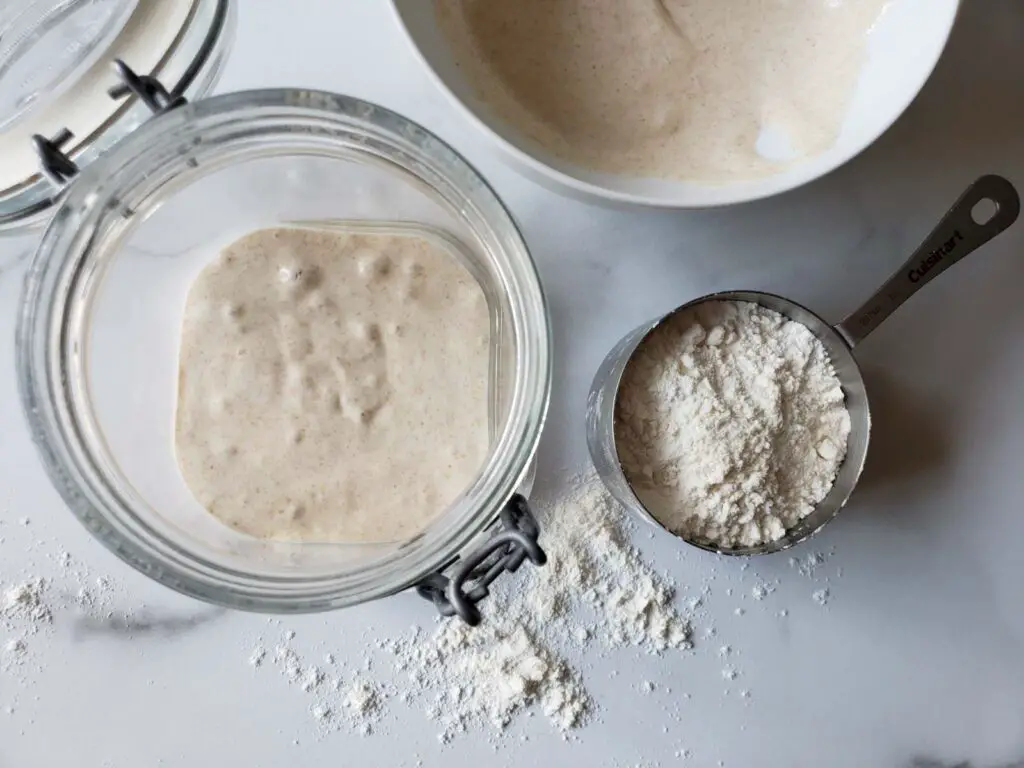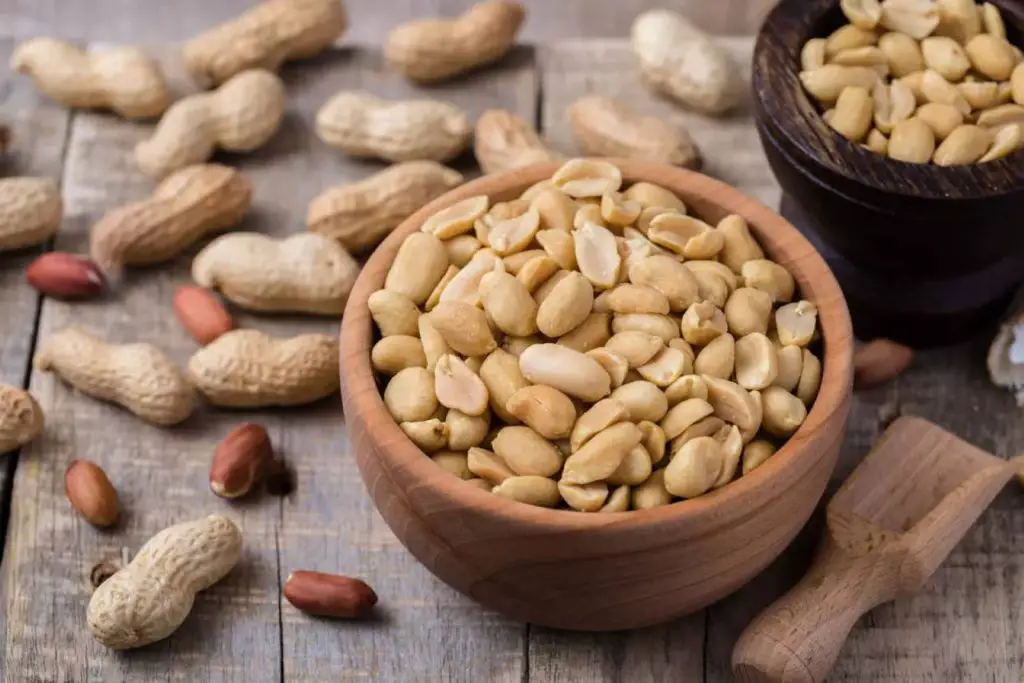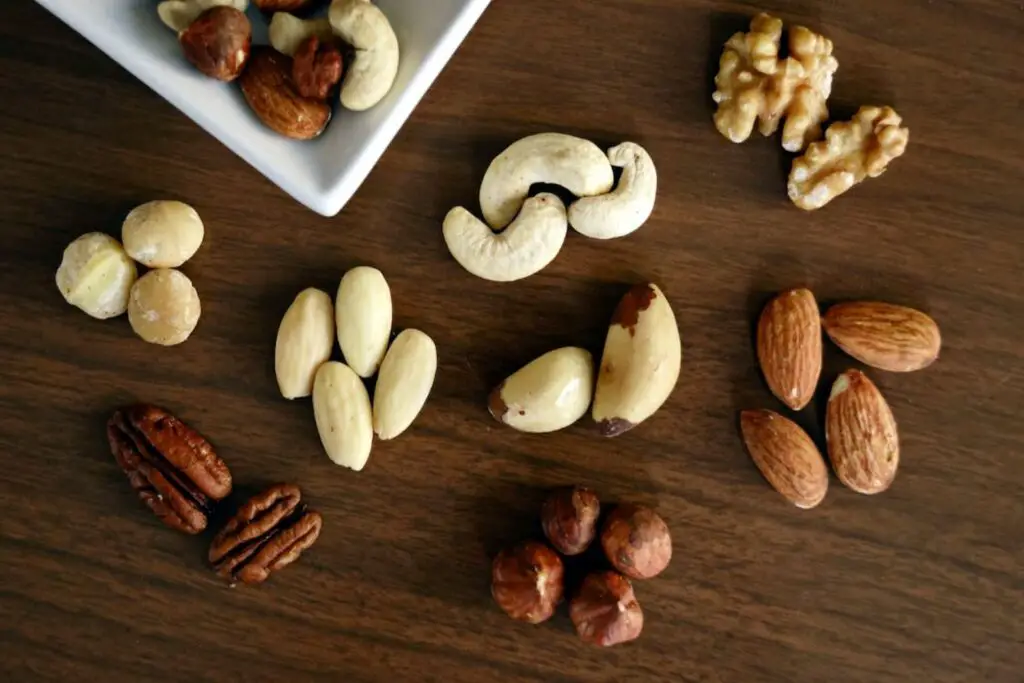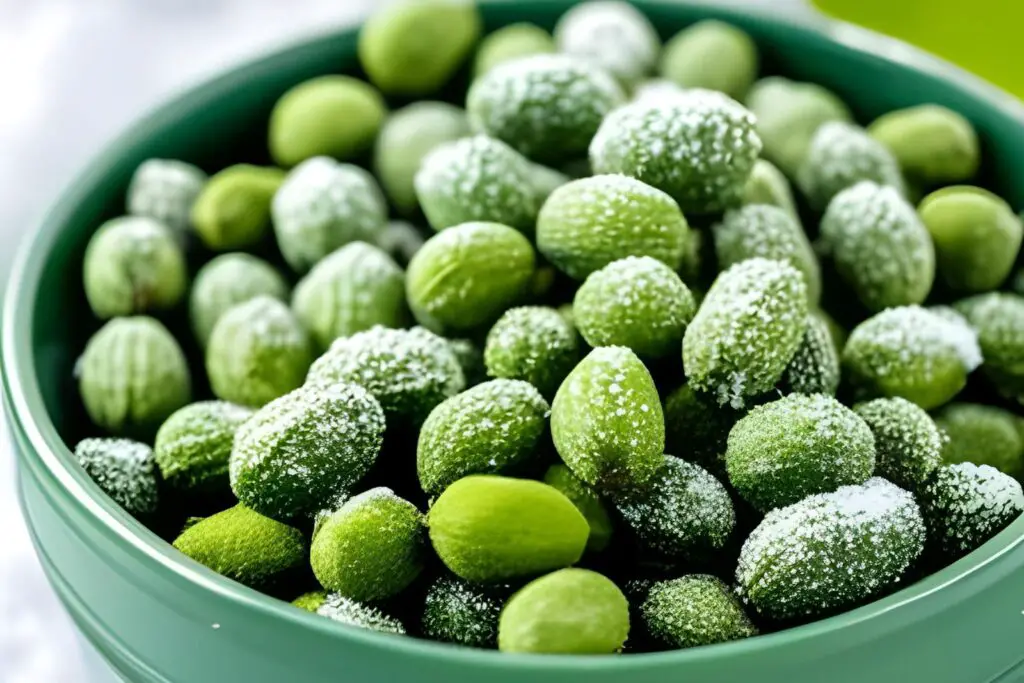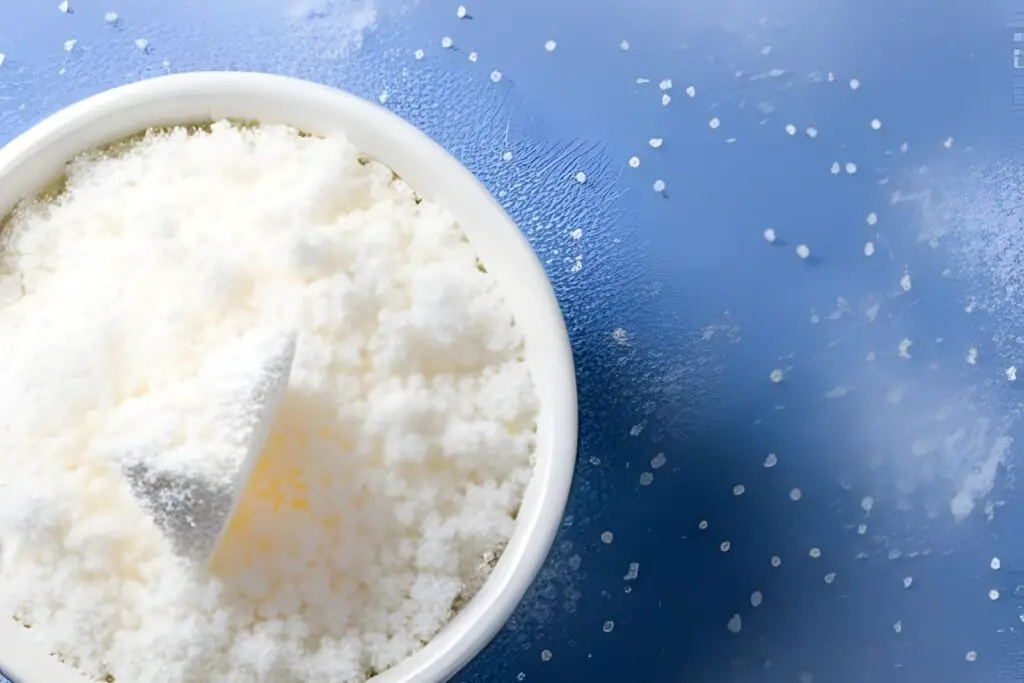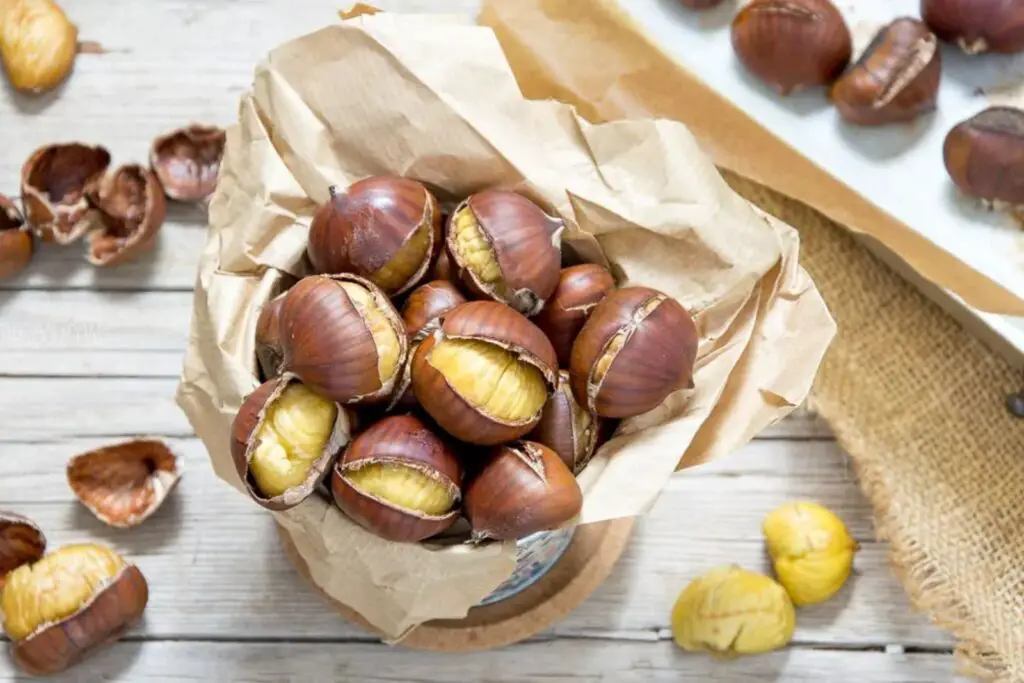
Pecans are a delicious and versatile nut that can be enjoyed in various recipes, from baked goods to salads and savory dishes. If you have an abundant supply of pecans or simply want to extend their shelf life, freezing them is an excellent option. Freezing pecans helps to preserve their natural oils, flavors, and textures, ensuring that they stay fresh and tasty for an extended period. By following a few simple steps, you can freeze pecans and have them readily available whenever you need them for your favorite recipes. Whether you want to enjoy pecans as a snack or enhance the flavors of your culinary creations, freezing pecans is a practical way to ensure their long-lasting quality and enjoy the rich and buttery taste of pecans whenever the craving strikes.
Here’s how to freeze pecans in a few easy steps:
Step 1: Choose fresh pecans
When it comes to freezing pecans, starting with fresh and high-quality nuts is essential. The freshness of the pecans will greatly impact the taste and overall quality of the frozen pecans. Therefore, it’s important to inspect the pecans before freezing them to ensure that you’re working with the best possible ingredients.
Inspecting the pecans allows you to identify any signs of spoilage or rancidity. Fresh pecans should have a rich, nutty aroma and a vibrant color. However, if you come across pecans that are discolored or have a shriveled appearance, it indicates that they may have gone bad. These pecans could have a stale taste or a rancid odor, which will negatively affect the flavor of the frozen pecans.
Spoilage in pecans can occur due to exposure to moisture or improper storage conditions. Moisture can lead to mold growth, and exposure to air can cause the pecans to become rancid over time. Therefore, it’s crucial to discard any pecans that show signs of spoilage to maintain the quality of the remaining batch.
Step 2: Shell or unshell the pecans
When freezing pecans, you have the option to either freeze them shelled or unshelled, depending on your preferences and intended use. Both choices have their advantages, so it’s important to consider your specific needs before deciding.
- Shelled pecans: Freezing shelled pecans is a convenient option if you plan to use them directly in recipes or as a snack. Removing the shells beforehand saves you time and effort when it comes to preparing the pecans for use. Shelled pecans are readily available, making them easy to incorporate into various dishes such as pies, cakes, cookies, or salads. They’re also convenient for snacking or adding to trail mixes.
- Unshelled pecans: If you don’t anticipate using the pecans immediately or prefer to store them for a longer period, freezing unshelled pecans may be a better choice. Pecans in their shells have a protective layer that helps preserve their freshness and flavor. The shells act as a natural barrier, reducing the exposure to air and potential moisture, which can affect the quality of the pecans over time. Unshelled pecans generally have a longer shelf life compared to shelled pecans.
When deciding between shelled and unshelled pecans, consider your anticipated usage and the convenience factor. If you frequently use pecans in recipes or enjoy snacking on them, shelled pecans offer greater convenience. On the other hand, if you’re looking for long-term storage or don’t plan to use the pecans immediately, unshelled pecans may be a better option to ensure their freshness and extend their shelf life.
Step 3: Pre-freeze the pecans
Pre-freezing pecans is an important step that helps maintain their individuality and prevents them from sticking together during storage. By following this process, you can ensure that you have easy access to the desired amount of pecans whenever you need them.
To pre-freeze the pecans, start by spreading them out in a single layer on a baking sheet or tray. It’s important to arrange the pecans in such a way that they are not touching or overlapping each other. This allows for better airflow and promotes even freezing.
Placing the pecans in the freezer in a single layer allows the cold air to circulate around each nut, ensuring that they freeze quickly and evenly. If the pecans were to freeze in clumps or touch each other, they could become difficult to separate later on, leading to potential damage to the nuts or a loss of their individual shape.
The pre-freezing process typically takes about two hours, but it can vary depending on the size and moisture content of the pecans. The pecans should be firm to the touch and no longer pliable when they are ready. This ensures that they are frozen enough to be safely transferred to a storage container without sticking together.
Step 4: Package the pecans
After pre-freezing the pecans, it’s important to transfer them into suitable packaging to maintain their quality and protect them from freezer burn. Proper packaging prevents the pecans from being exposed to air and moisture, ensuring that they retain their flavor, texture, and overall freshness during storage.
To package the pecans, you have a few options:
- Airtight containers: Use airtight containers made of plastic or glass specifically designed for freezer storage. These containers provide a reliable barrier against air and moisture. Place the pre-frozen pecans into the containers, ensuring that there is enough space for expansion during freezing. Seal the containers tightly to create a secure environment for the pecans.
- Resealable freezer bags: Another option is to use resealable freezer bags that are thick and durable. Place the pre-frozen pecans into the bags, arranging them in a single layer if possible. Squeeze out as much air as possible from the bags before sealing them tightly. This minimizes the amount of air trapped inside, reducing the risk of freezer burn.
Regardless of the packaging method you choose, it’s crucial to remove as much air as possible from the containers or bags. Air contains moisture, and when it comes into contact with the pecans, it can cause freezer burn. Freezer burn results in the formation of ice crystals on the surface of the pecans, leading to a loss of flavor and texture.
Proper packaging is crucial for maximizing the shelf life of frozen pecans and ensuring that they remain in optimal condition until you’re ready to use them.
Step 5: Label and date the packages
Labeling and dating the packages of frozen pecans is an important step to maintain organization, prevent confusion, and ensure that you use the pecans within their recommended timeframe. By providing clear information on the package, you can easily identify the contents and keep track of their freshness.
Here’s why labeling and dating are essential:
- Avoid confusion: When you have multiple packages of frozen pecans in your freezer, it can be challenging to differentiate between them, especially if they are stored in similar containers or bags. Labeling each package allows you to quickly identify the contents without the need to open them. It helps avoid confusion and ensures that you can retrieve the specific type of pecans you need.
- Track freshness: Freezing extends the shelf life of pecans, but it’s still important to consume them within a reasonable timeframe to enjoy their best quality. By labeling each package with the date of freezing, you can easily track how long the pecans have been stored. This information helps you prioritize the usage of the oldest pecans first and ensures that you use them before they start to decline in quality.
- Identify different types or varieties: If you have different types or varieties of pecans, such as roasted pecans, candied pecans, or different cultivars, it can be helpful to label the packages accordingly. This allows you to quickly identify the specific type or variety you want to use without opening multiple packages to check their contents.
Consider using adhesive labels or permanent markers to write the date of freezing and any relevant information about the pecans on the package. Place the labels where they are easily visible, allowing for quick identification.
Step 6: Store in the freezer
Once you have labeled and dated the packages of pecans, it’s time to store them in the freezer. Proper storage conditions are crucial to maintain the quality, flavor, and texture of the pecans during their frozen state. Here’s how to store them effectively:
- Placement in the freezer: Find a suitable spot in your freezer where you can keep the pecan packages. Ensure that they are placed in a single layer or stacked neatly to avoid crushing or damaging the packages. This also allows for better airflow around the pecans, aiding in maintaining their quality.
- Constant and stable temperature: It’s important to store the pecans in a part of the freezer that maintains a constant and stable temperature. Fluctuating temperatures can cause the pecans to thaw and refreeze, potentially affecting their texture and taste. Keep the freezer temperature at 0°F (-18°C) or below for optimal storage conditions.
- Long-term storage: Properly frozen pecans can retain their quality for up to a year when stored under ideal conditions. However, for the best flavor and texture, it is recommended to use the pecans within six months. Over time, the pecans may gradually lose their flavor and become more susceptible to freezer burn, so it’s advisable to consume them within a reasonable timeframe.
By storing the pecans in the freezer at a consistent and low temperature, you create an environment that preserves their freshness and prevents the growth of bacteria or microorganisms. This ensures that the pecans remain delicious and ready to use whenever you need them.
Remember to handle the packages with care when placing them in the freezer to avoid any damage or accidental opening. Make sure the packages are sealed properly to prevent air and moisture from entering.
Step 7: Thawing and using frozen pecans
When the time comes to use your frozen pecans, it’s important to thaw them properly to preserve their texture and flavor. Thawing the pecans slowly and gradually is the best method, and the refrigerator is the recommended place for this process. Here’s how to thaw and use your frozen pecans:
- Remove the desired amount: Start by removing the number of pecans you need from the freezer. Take out the labeled package or bag and carefully open it.
- Thaw in the refrigerator: Place the package of pecans in the refrigerator and let them thaw slowly. Thawing in the refrigerator ensures a controlled and gradual thawing process, which helps maintain the texture and flavor of the pecans. It is recommended to leave them in the fridge overnight or for a few hours, depending on the quantity and size of the pecans.
- Protect from moisture: To prevent any potential moisture from condensation, it’s a good idea to place the package on a plate or in a container while it thaws in the refrigerator. This helps protect the pecans from coming into direct contact with any moisture that may accumulate during the thawing process.
- Use in recipes or enjoy as a snack: Once the pecans are thawed, they are ready to be used in your favorite recipes or enjoyed as a snack. Whether you’re adding them to baked goods, or salads, or using them as a topping, the thawed pecans will retain their delicious flavor and texture.
Thawing the pecans slowly in the refrigerator allows them to gradually come to room temperature without any sudden changes. This gentle thawing process helps preserve their natural texture and taste, ensuring that they are as close to fresh pecans as possible.
Avoid thawing pecans at room temperature or using methods like microwaving, as these can lead to uneven thawing, loss of texture, and potential moisture absorption. Thawing in the refrigerator is the best way to maintain the quality of your frozen pecans.
Other related questions
How long can I store frozen pecans?
Frozen pecans can be stored for an extended period, maintaining their quality and flavor. When stored properly in airtight containers or freezer bags, frozen pecans can be kept for up to a year. However, for the best flavor and texture, it is recommended to use them within six months. Over time, frozen pecans may gradually lose some of their freshness and become more susceptible to freezer burn, so it’s advisable to consume them within a reasonable timeframe. Regularly checking the pecans for any signs of deterioration or off flavors is recommended when storing them for an extended period.
Can I refreeze pecans after they have been previously thawed?
It is generally not recommended to refreeze pecans after they have been previously thawed. Freezing and thawing pecans multiple times can affect their texture and quality. Each time pecans go through the thawing process, moisture can accumulate, potentially leading to a loss of flavor and texture. To maintain the best quality, it is advisable to use the thawed pecans promptly rather than refreezing them. If you have thawed pecans that you won’t be able to consume, consider storing them in the refrigerator for a short period or finding alternative uses for them in recipes.
How do I know if my frozen pecans have gone bad?
To determine if your frozen pecans have gone bad, there are a few signs to look out for. First, inspect the pecans for any changes in color, such as darkening or discoloration. Additionally, if they have an off or rancid smell, it indicates spoilage. Taste a small piece of the pecan to check for any unpleasant or bitter flavors. Lastly, if you notice the pecans have become excessively dry or have developed a slimy texture, it is best to discard them, as these are signs of spoilage. It’s important to trust your senses and use your best judgment when assessing the quality of frozen pecans.
Can I use frozen pecans with fresh ones?
Yes, you can use frozen pecans with fresh ones in many recipes and dishes. The flavor and texture of frozen pecans are generally preserved when properly frozen. However, keep in mind that the frozen pecans may have a slightly different texture compared to the fresh ones. To ensure consistent results, you can consider thawing the frozen pecans and using them together with fresh pecans in your recipe. This combination allows you to enjoy the convenience of using frozen pecans while still incorporating fresh ones for added crunch and flavor.
Should I blanch the pecans before freezing them?
Blanching pecans before freezing is not necessary. Blanching involves briefly boiling or scalding the pecans in hot water and then cooling them quickly. However, for freezing purposes, it is not required as it does not significantly impact the quality or shelf life of the pecans. Simply pre-freezing and packaging the pecans according to the recommended steps will ensure they maintain their flavor and texture in the freezer.
Can I freeze pecans in mason jars?
While mason jars are commonly used for various food storage purposes, they are not recommended for freezing pecans. Pecans have a high oil content, and when frozen, they can expand, potentially causing glass jars to crack or break. Additionally, mason jars may not provide adequate protection against freezer burn, which can affect the quality of the pecans. It is best to use airtight containers or freezer bags specifically designed for freezer storage when freezing pecans.
Can I freeze pecans that have been roasted or seasoned?
Yes, you can freeze pecans that have been roasted or seasoned. However, keep in mind that the flavor and texture of the roasted or seasoned pecans may slightly change after freezing. It’s best to freeze them in airtight containers or freezer bags to prevent exposure to air and moisture, which can compromise their taste and texture. When thawed, the pecans may still be suitable for snacking or for use in recipes that complement their roasted or seasoned flavors.
Can I freeze pecans with other types of nuts?
Yes, you can freeze pecans with other types of nuts. Freezing mixed nuts, including pecans, is a common practice to preserve their freshness. However, it’s important to ensure that all the nuts are of good quality and properly stored in airtight containers or freezer bags to prevent cross-contamination of flavors and odors. When using the mixed nuts, you can enjoy the variety and combination of flavors they offer in recipes or as a convenient snack.

